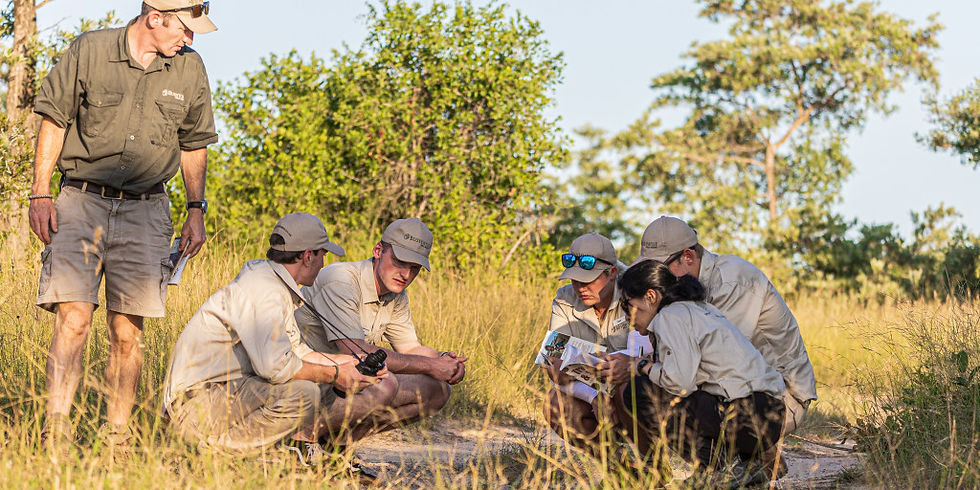Track and sign: art or science?
- Louise Pavid
- Mar 3, 2022
- 3 min read
Updated: Sep 10
Following the track and sign portion of the Bushwise IFGA Safari Guide course, Louise Pavid tells us a bit more about the art and science of tracking.
Writing and Photos By: Louise Pavid, Bushwise Photographer and Videographer
Being able to identify and follow animal tracks has long been regarded as a mysterious ability that only those with the truest connection to nature are able to call upon. But how mysterious is this ability, really?

During the Bushwise IFGA Safari Guide course, students spend two weeks on skills development and intense Track and Sign training with Colin Patrick Training. Colin has over 20 years of conservation experience and has been involved with both the ecotourism and security industries. When I speak of the security industry I specifically mean anti-poaching and tactical (human) tracking.

Finding animals by using their tracks is only a part of the process. Knowing how to identify a track as belonging to a lion or leopard is a very small part of actually finding that lion or leopard. For field guides, it can be a highly appreciated and necessary skill, especially if you’d like to show your guests the iconic leopard they’ve travelled all the way to Africa to see on safari.

As Colin puts it, “Tracking is logic.” This refers to the mental process employed to gather information, conduct analyses, and make decisions about a particular scuff mark in the sand. A track is just that, a track. It either is or it isn’t. Tracks don’t lie – they reveal the secret stories of the wild, and to understand them we need to learn their language.

To the experienced tracker, a quick glance can tell them whether a track is that of an impala or a wildebeest. Having the knowledge and skill to tell them apart at first glance is where the hard work and study comes in. The rest is up to experience.

Needless to say, the “art” of track and sign comes down to learning what various tracks look like in different forms – the language of the tracks. There are a few basic tools we can use to make this easier. First is the light. Is the light working with you or against you? Can you position yourself better to make the light work better for you? Second is determining the direction of the track. Which way was the animal moving? Third is knowing the details of the track, what animal actually left it behind, and how can you prove that it belongs to a specific animal? Last is understanding the bigger picture. What is the context of the track, where is it in the habitat, what other tracks are around or on top of it? How can the greater context tell you a story?

We all have the ability to learn. No matter how much experience you have or how long you have lived and worked in the bush, there is something new to see every single day. There is not one person on this planet that can tell you everything about the natural environment – there is just too much to learn! But the art of tracking is not quite as mysterious as it may seem.

To put it simply, tracking starts with observing a few things that can lead you in the right direction. It’s important to remember that identifying a track is a very different story from trailing (following) the animal that left the track. As I continue to learn, I hope to soon share that experience with you. Until then, much more study needs to be employed to even scratch the surface of interpreting the stories of wildlife from the various scratches, patches, and prints left in African dust.
Have you ever seen a track in the sand, and wondered who left it behind? Apply to the Bushwise IFGA Safari Guide course to gain this powerful knowledge!



